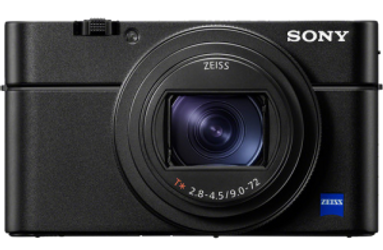Sony RX100 VII Review
September 11th, 2021
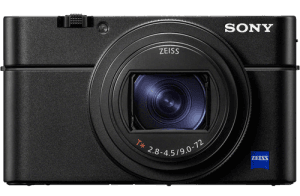
Sony's announcement of the RX100 VII's launch was overshadowed by the simultaneous launches of the Sony A7R IV and the Sony a6400, which, understandably, stole the show. A compact camera is never going to grab as many headlines as its full-frame counterparts, but the Sony RX100 VII is still a very exciting camera.
The new Sony RX100 VII comes packed with upgraded features from its predecessor, the Sony RX 100 VI, such as improved autofocus and burst shooting which have been perfected in, and passed down from, some of Sony's big hitters such as the A9, A6600, and A7R IV. Most notably, the improved autofocus and, specifically, the animal eye tracking AF will be welcomed with open arms by underwater photographers who like to shoot with compact cameras. You can be confident that you'll nail focus when shooting fish, dolphins, sharks and other marine life.
How has Sony achieved these extensive upgrades?
It's mainly via firmware updates. The hardware is much the same as the older Sony RX100 VI. Nevertheless, the RX100VII is still significantly improved over the mark VI version and is a serious option for underwater photography.
Sony RX100 VII vs Sony RX100 VI
As we've already touched on, the RX100 VII isn't much different from the RX100 VI from a hardware standpoint. Most of the notable upgrades are delivered via a firmware update. Because of this, the RX100 VII is compatible with many underwater housings made for its older sibling, with a few exceptions. However, we can confirm that the MK VII model does work with the Ikelite and Fantasea RX100 VI housings.
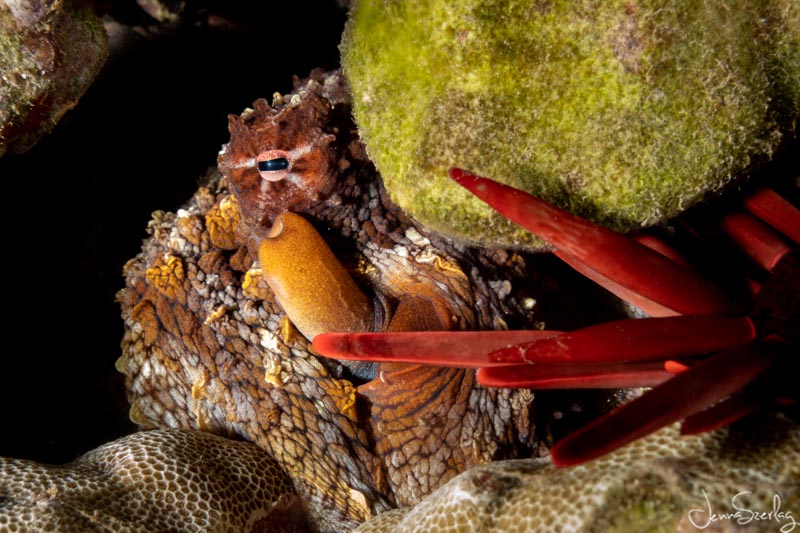
While most of the updates come via a firmware upgrade, there are a few physical upgrades that we're pleased to see. Sony has added a microphone jack to the RX100 VII, which vloggers are likely to appreciate, and an upgraded BIONZ X process that improves readout speed.
The upgrades that come via the firmware update include a new native base ISO of 100, more AF points (both contrast and phase detect), eye tracking AF for both humans and animals, no blackout in burst mode, Sony's Active SteadyShot for video, unlimited 4K recording, and a vertical video mode for social media sharing. This array of firmware upgrades makes up for the lack of physical hardware upgrades over its predecessor.
Sony RX100 VII Specifications
- 20.1 MP stacked CMOS sensor
- BIONZ X processor
- Built-in 24-200mm (equivalent) f/2.8-4.5 zoom lens
- Microphone jack
- 357 phase detection and 425 contrast detection autofocus points!
- 0.02-second AF acquisition speed
- Improved autofocus tracking
- Animal Eye AF tracking
- 20fps burst mode without blackout
- Electronic shutter up to 1/32000s
- Timelapse with interval shooting
- ISO: 100 - 12800
- 4K video with full pixel readout (no pixel binning)
- Unlimited 4K recording time
- S-LOG2, S-Log3, and HLG picture profiles
- Active SteadyShot mode for video shooting
- Tilting touch screen LCD
- WiFi and Bluetooth
- 2.36 million-dot pop-up EVF
- Size: 4.02” x 2.28” x 1.69” (10.2cm x 5.8cm x 4.3cm)
- Weight: 0.67lb (302g)
A closer look at the Sony RX100 VII
Build
The old RX100 VI was a robust and well-built camera, and thanks to the RX100 VII being essentially the same physically, it inherits all of these great qualities, which we're happy to see. The camera packs a lot of powerful features into a compact and lightweight body, making it the ideal camera for travelers and people who don't want to carry around a large camera system. The RX100 VII also fits into small underwater housings, resulting in a significantly smaller set-up when diving.
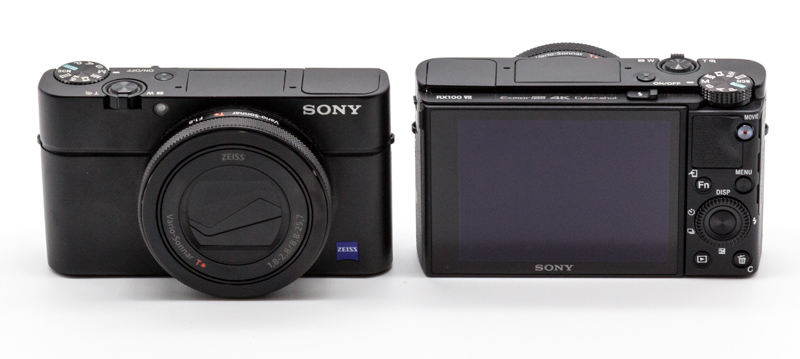
Autofocus
Autofocus performance is where the Sony RX100 VII shines, so much so that it has led people to nickname it the "mini A9". Sony has spent years refining its AF technology to an industry-leading standard, and that technology has been passed down and made its way into the RX100 VII. 357 phase detection and 425 contrast-detection AF points make locking onto subjects and accurately tracking them as easy as it would be with a camera twice the price.
Perhaps the most significant improvement for underwater photographers is that the RX100 VII now comes with animal eye AF, which works well with fish, dolphins, sharks and other marine life.
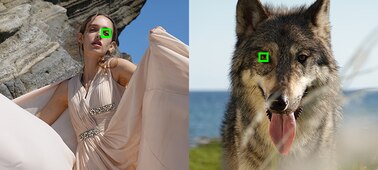
Burst mode
In burst mode, the RX100 VII can capture up to 20 frames per second with continuous AF and no blackout. This can be extended to a massive 90 frames per second, but the drawback is that you can only achieve this speed for 7 frames. Helpful in shooting fast-moving schools of fish, but little else when it comes to underwater photography. One of the most useful upgrades for shooting underwater is the 20fps without blackout, which makes composing your images while shooting in burst mode much more straightforward.
Built-in optical zoom
The 24-200mm f/2.8-4.5 lens is an excellent lens that can produce incredibly sharp, detailed images, even when shooting macro photography. You can take its macro capabilities further with the Bluewater +7 and the Nauticam CMC. The Sony RX100 VII is hands-down the best compact camera currently on the market for macro photography.
Unfortunately, when the lens is zoomed all the way in, it's longer than most compact underwater housing systems, so you'll need to purchase an additional extension port for shooting macro and a shorter port for shooting wide angle. The Sony RX100 V and VA are better options if you want to be able to shoot both wide-angle and macro on the same dive.
Low-light performance
As you would expect with a compact camera, low-light performance could be better. However, it has been improved from the older RX100 VI with a native ISO range of 100 – 12800, which means better dynamic range and the ability to recover more of the highlights and shadows.
Video
Along with the improved autofocus system, the upgraded video capabilities of the RX100 VII are the camera's biggest talking points. You can shoot in 4K video, but the difference is that it's now unlimited. In combination with the excellent animal eye tracking autofocus, you can capture high-quality video footage on every dive.
Underwater Photography
The Sony RX100 VII is an excellent compact camera for underwater photography. It's the highest-end choice on the market thanks to its superb image quality, fast and accurate autofocus and burst shooting mode, which will help you capture all of the underwater action you come across.
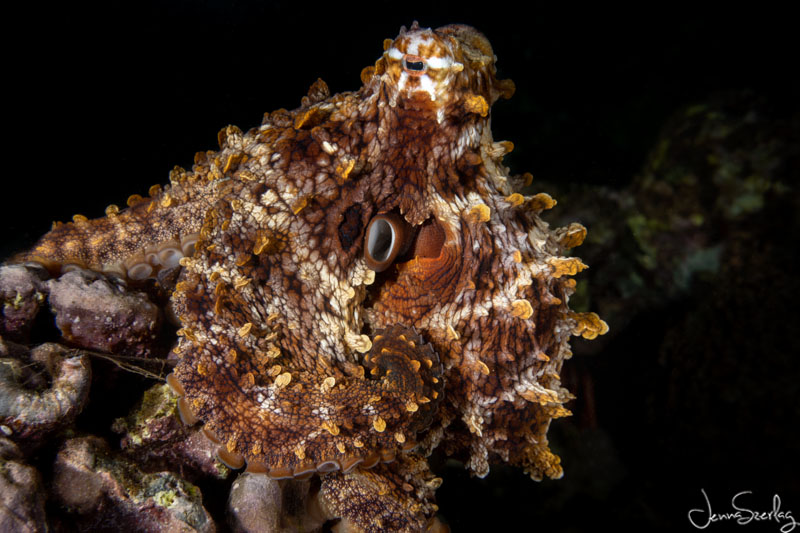
The image quality is hard to beat, even with Sony's big hitters like the mirrorless Alpha Series. However, the one area where it does lag behind the big hitters is in autofocus speed. While it is speedy and accurate, it doesn't quite beat models like the A6100 and the A7R IV, which is not surprising considering the price difference and the fact we are talking about a compact camera in the RX100 VII after all.
Supermacro photography is where the Sony RX100 VII excels, thanks to the 24-200mm f/2.8-4.5 lens. The only downside is that the minimum focusing distance is quite long on the RX100 VII due to the long focal length unless you use a wet macro lens.
We recommend the Sony RX100 V/VA for people who want to be able to shoot both wide-angle and macro photography on the same dive, but the RX100 VII for supermacro photography because of the extended focal length.
Underwater Video
The RX100 VII's video capability is another area where it shines. The improvements to the autofocus system and especially the addition of animal eye tracking means you can track subjects easily as you follow them around underwater. You can now also record unlimited 4K video, so you don't have to worry about running out of recording time.
Is The RX100VII Good Value for Money?
Having talked a lot about the camera's specs, another big consideration is the price of the RX100 VII. It retails for $1200, significantly more than comparable compact cameras such as the Canon G7X Mark III and the Olympus TG-6, it's also more than Sony's own RX100 V/VA or mirrorless A6100. You'll have to keep in mind that the mirrorless alternatives are body-only, so you've got the additional cost of lenses to consider.
If you're a casual underwater photographer and looking for a camera that will do a good job of capturing your underwater adventures, then the more affordable G7X Mark III and the Olympus TG-6 may be more suitable options. But if you want the best image quality possible in a compact package and don't mind paying $1200, then the Sony RX100 VII is a top choice.
Videographers will also find the RX100 VII a great option thanks to the autofocus system, Active SteadyShot and animal eye tracking.
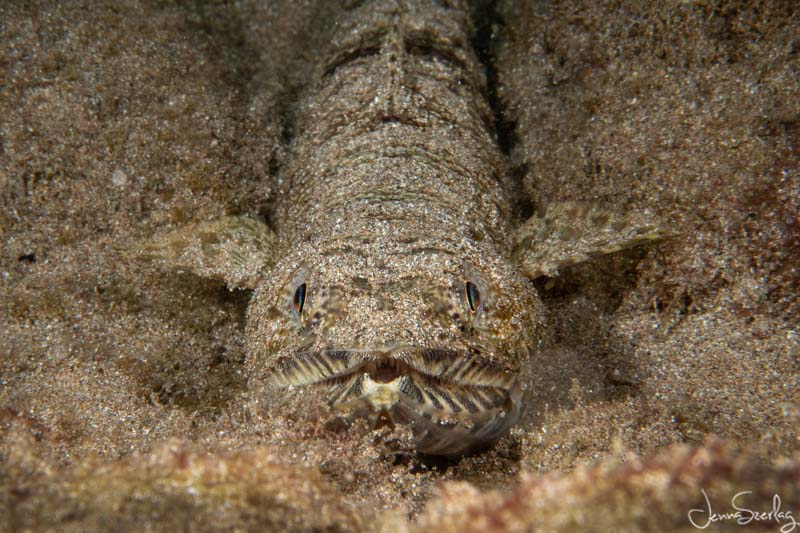
Best Lenses for the RX100 VII
Since the RX100 VII is a compact camera, it has a fixed 24-200mm f/2.8-4.5 zoom lens. It also means you'll need different port extensions to use the entire zoom range since, at its longest focal length, the lens extends out further than most underwater housings can accommodate. Depending on whether you're planning to shoot macro or wide-angle photography on your dive, you'll need to install a different port extension before getting in the water, restricting you to one type of photography per dive.
Macro
Bluewater +7 Macro Lens
The Bluewater +7 Macro Lens is a more affordable alternative to its Nauticam counterpart but offers excellent optical image quality. It's a two-element lens that is UV and anti-reflective-coated.
Nauticam Compact Macro Converters (CMC-1 & CMC-2)
The Nauticam Compact Macro Converters (CMC-1 & CMC-2) allow you to capture amazingly sharp images at different degrees of magnification. The CMC-1 offers 4.5x magnification, and the CMC-2 offers 2.9x magnification.
Wide-Angle
Wide-angle wet lenses are almost essential for shooting wide-angle photography with compact cameras because their fixed lenses often do not offer a wide enough equivalent focal length to capture the big picture.
Fantasea UWL-09 Wide Angle Lens
Install the Fantasea UWL-09 Wide Angle Lens mid-dive and enjoy its 130-degree field of view, which is excellent for capturing large animals passing by and reefscapes.
Kraken Sports KRL-01
The Kraken Sports KRL-01 features full zoom-through capability and a massive 145-degree field of view. It's also compatible with a wide range of cameras at 24mm focal length, including micro four-thirds and full-frame cameras.
Underwater Housings for the Sony RX100 VII
Underwater housings for the Sony RX100 VII are small, lightweight and cost significantly less than mirrorless housings. And if you're upgrading from the Sony RX100 VI and already have a housing from either Ikelite or Fantasea, it will work with the newer MK VII camera.
Nauticam RX100 VII Housing
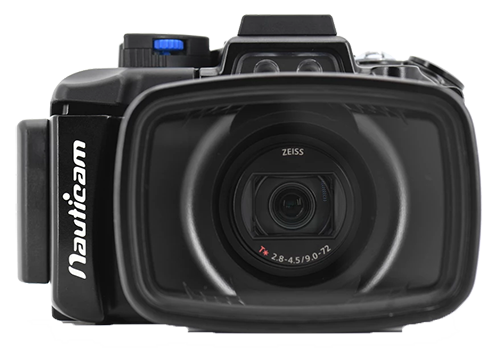
Made from durable aluminum, the Nauticam RX100 VII Housing is a popular option and has excellent ergonomics. The standard N50 port system means you can easily change ports to get the best results depending on the type of underwater photography you'll be shooting.
Ikelite RX100 VII Housing
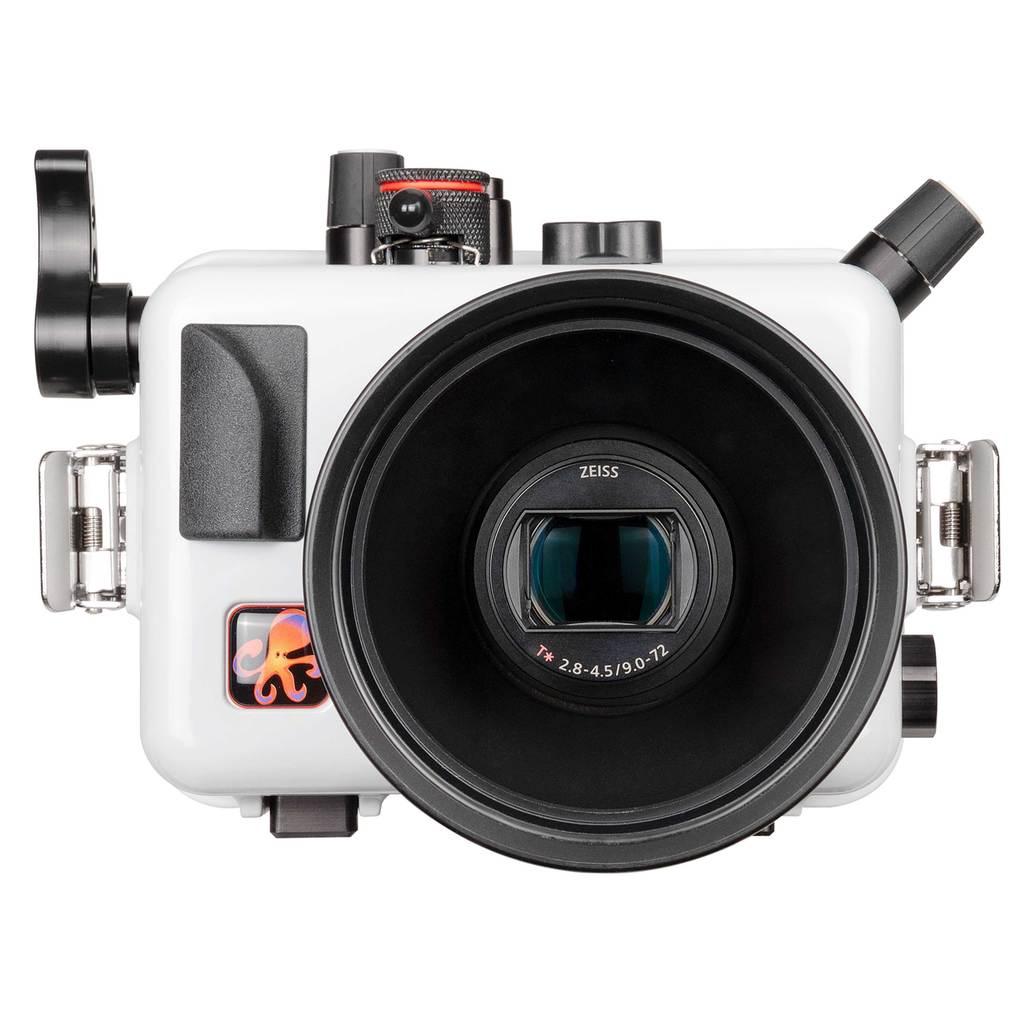
Unlike the Nauticam, the Ikelite RX100 VII Housing isn't made from aluminum. Instead, it's made from a high-quality ABS polycarbonate which is equally as durable but lowers its price point. Ikelite has a native port extension, so you can use the RX100 VII's extendable zoom lens to its full potential.
Fantasea RX100 VII Housing
The Fantasea RX100 VII Housing is a more affordable option but is lightweight, robust and reliable. It also has excellent ergonomics, which makes using it underwater intuitive and hassle-free.
Conclusion
The Sony RX 100 VII follows in the footsteps of other cameras in the manufacturer's lineup with its latest innovations and feature-packed offering. Sony's Alpha Series lineup has shaken up the industry in recent years and forced other brands to play catch up, and the RX100 VII is doing the same in the compact camera market. It benefits from innovations in high-end models being passed down, which is great to see and isn't commonly found with other brands.
The firmware upgrades that have enabled the RX100 VII to top the charts regarding compact cameras let us forgive the lack of hardware upgrades from the RX100 VI to this newer model. The price is its only real drawback since, at $1200, it's getting close to the realm of mirrorless camera prices.
All in all, the Sony RX100 VII is the best compact camera on the market. If the price point doesn't put you off and you value compactness and weight savings while getting the best image quality possible, this is the camera you've been looking for.

